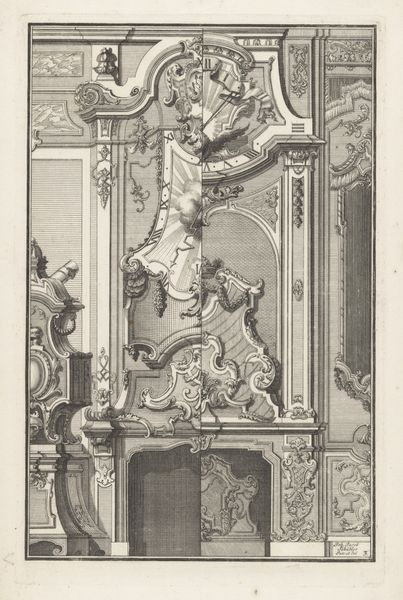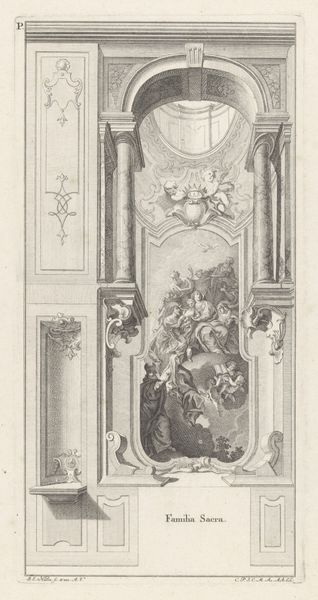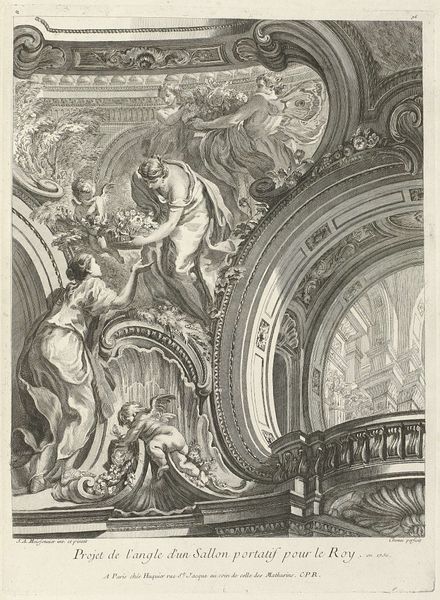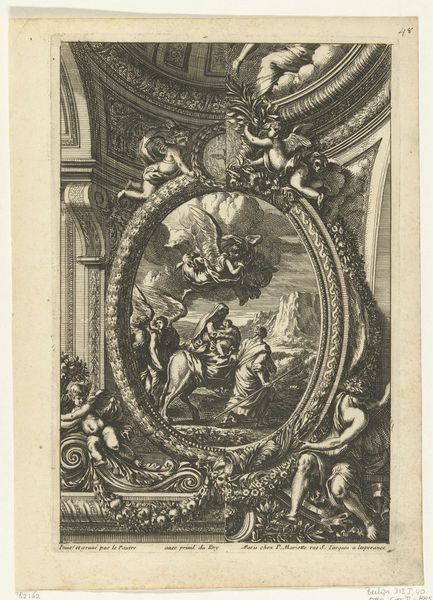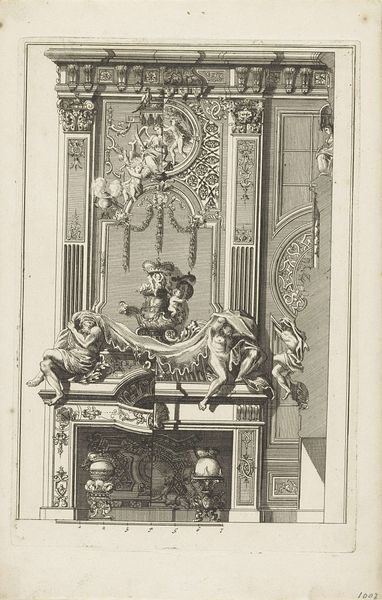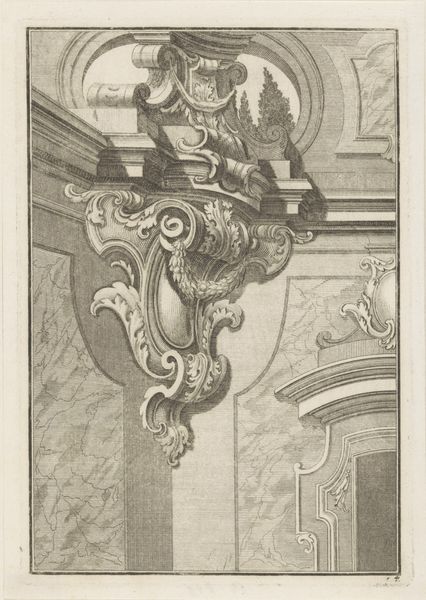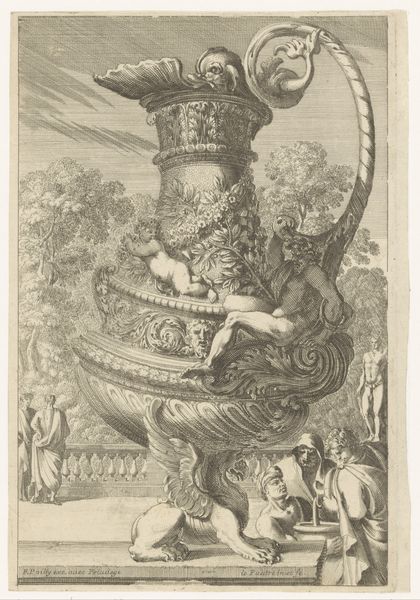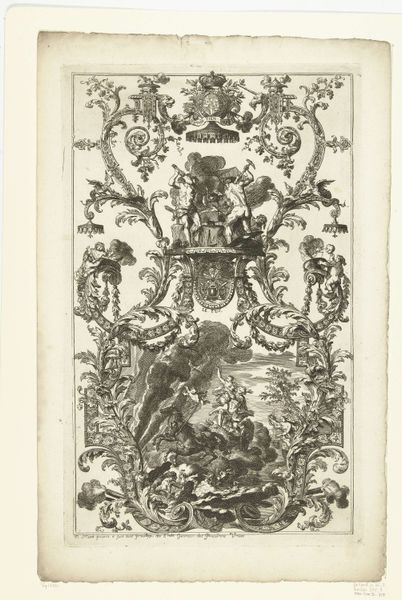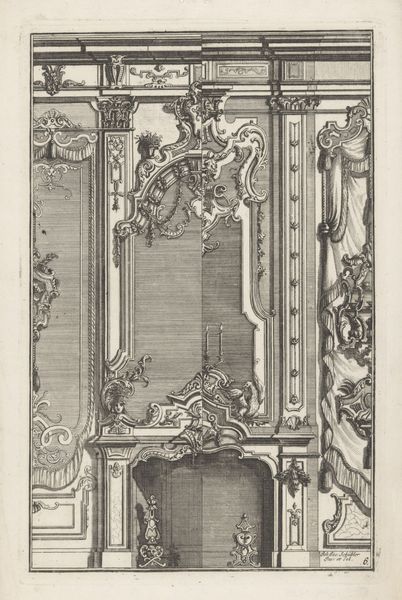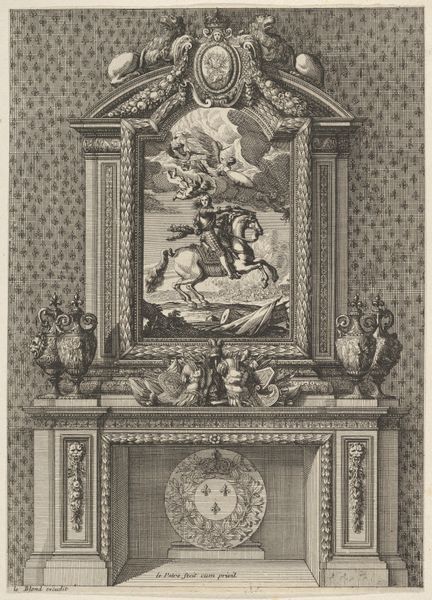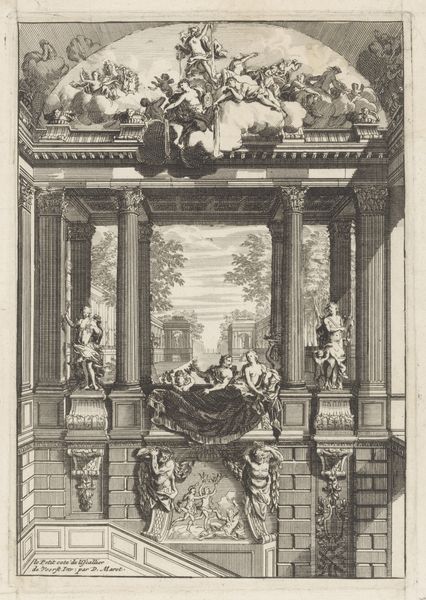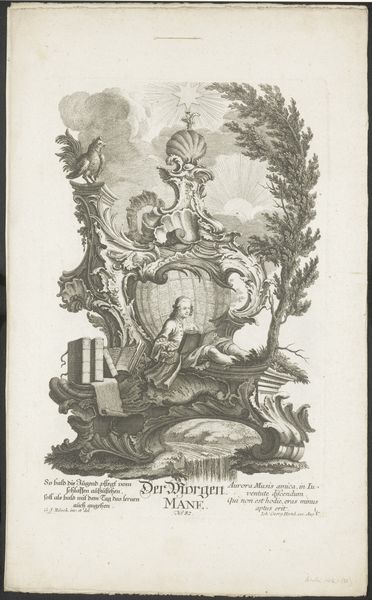
Plate 9: Allegory of Temperance with a unicorn and Publius Scipio Africanus at bottom, from Barberinae aulae fornix 1672 - 1682
0:00
0:00
drawing, print, engraving
#
drawing
#
allegory
#
baroque
# print
#
old engraving style
#
figuration
#
personal sketchbook
#
men
#
line
#
sketchbook drawing
#
history-painting
#
engraving
Dimensions: Mount: 15 7/8 in. × 21 3/8 in. (40.3 × 54.3 cm) Sheet: 14 1/2 × 11 7/16 in. (36.9 × 29 cm)
Copyright: Public Domain
Curator: This print is entitled "Plate 9: Allegory of Temperance with a unicorn and Publius Scipio Africanus at bottom." It’s estimated to have been created between 1672 and 1682, and its creator is currently unknown. What strikes you first about this engraving? Editor: Its dramatic use of light and shadow gives the piece an intense, almost theatrical quality. The composition feels incredibly dynamic, with figures swirling around a central, octagonal panel. It’s all rather dizzying. Curator: It is indeed baroque in its extravagance! I’m intrigued by the choice to depict temperance—traditionally a virtue—through the lens of warfare and conquest, with Scipio Africanus at the base. The image speaks to the historical context in which this piece emerged: wars against Carthage, social expectations... There were virgin women deprived by him in Carthaginia... All these aspects relate the production and perception of images, linking cultural values and their material representation. Editor: Absolutely, the thematic complexity mirrors the visual layering. The symbolism is rich - the unicorn, for example, representing purity and grace juxtaposed with a serpent seemingly attacking it. Notice the swirling lines. They construct not only shapes and volumes but also create textures through strategic ink density. How this print makes me "feel" and then "think" involves considering that the material is inherently the message. Curator: I find it fascinating how the act of controlling the beast represents personal temperance, yet also alludes to societal control. Editor: Consider also that temperance may require repression, sacrifice, a complete submission and restraint, if we are looking into its depiction as a personal or collective victory in terms of emotional strength. Is that strength truly positive if it’s linked to suffering? Curator: It also challenges our reading of temperance as simply passive restraint. It demands active subjugation, reflecting the hierarchical structures present in Baroque society and belief in that era. Editor: Looking closer at its materiality – the etched lines themselves – do you get the impression that they embody discipline and containment. Almost like an artistic embodiment of the depicted virtue itself. The artist—or more likely artisan workshop—transforms materials into ideas of personal, spiritual even national ethos. Curator: Yes, engraving required immense skill. This artwork provides a way to access the modes of production of such art. I do believe that it prompts us to consider temperance, continence, their symbols and how it can affect all parts of human and even natural aspects. Editor: This detailed interplay of form and concept truly shows how close visual inspection combined with theoretical perspectives enables insight beyond aesthetics and offers instead a deeper, more profound connection.
Comments
No comments
Be the first to comment and join the conversation on the ultimate creative platform.
